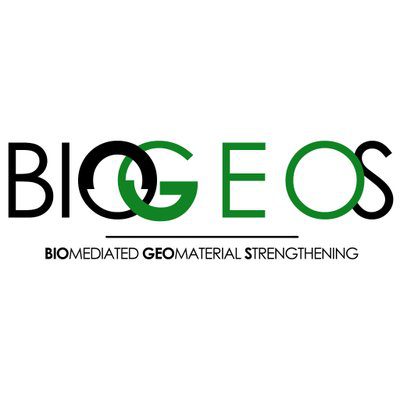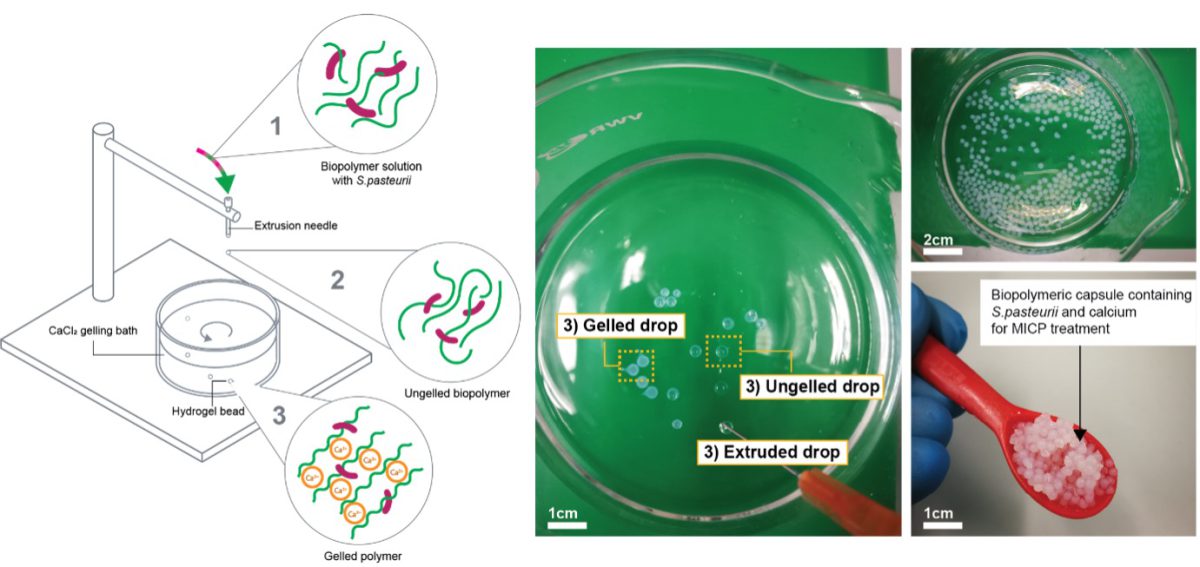Interested in knowing how can we control the location and timing of the Microbially-Induced Calcite Precipitation (MICP) reaction, and the structure and properties of the resulting carbonate minerals?
Our new paper “Controlling the calcium carbonate microstructure of engineering living building materials”, published in the Royal Society of Chemistry Journal of Materials Chemistry A introduces a novel use of hydrogel encapsulation of bacteria for on-demand release of MICP in soils.
The methods developed bring together multidisciplinary expertise in soil mechanics, material science and biological processes from three different laboratories of EPFL: the Laboratory of Soil Mechanics (LMS) (Dr Alexandra Clarà Saracho, Lorenzo Lucherini, Dr Dimitrios Terzis and Prof. Lyesse Laloui), the Soft Matter Laboratory (Matteo Hirsch and Prof. Esther Amstad) and the Stream Biofilm and Ecosystem Research Laboratory (Dr Hannes M. Peter).
This work has received funding from a 2018–2024 European Research Council (ERC) Advanced grant awarded to Prof. Lyesse Laloui, who heads the LMS and is a co-author of the paper, under the European Union’s Horizon 2020 research and innovation programme (Grant agreement No. 788587). The authors would also like to acknowledge the Gebert Rüf Stiftung (ref: GRS-027/19, EPFL grant number: 7683) innovation booster grant.
References
[1] https://pubs.rsc.org/en/content/articlelanding/2021/TA/D1TA03990C
[2] https://actu.epfl.ch/news/professor-laloui-awarded-a-prestigious-erc-advance/
[3] https://biogeos.epfl.ch/news/lyesse-laloui-awarded-a-prestigious-erc-proof-of-concept-grant/

